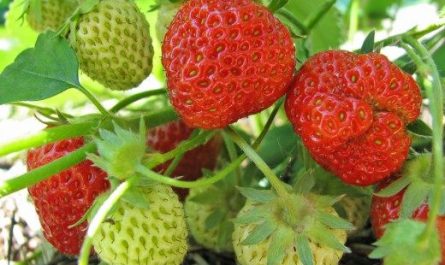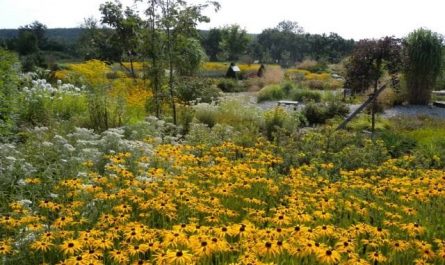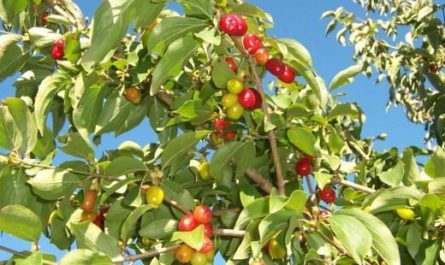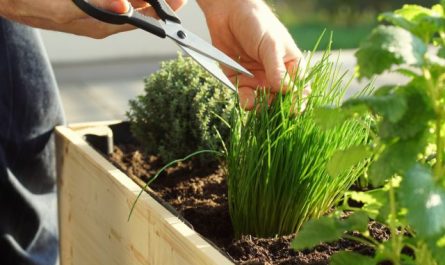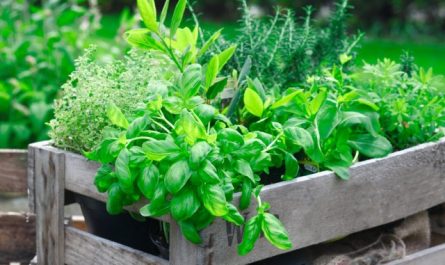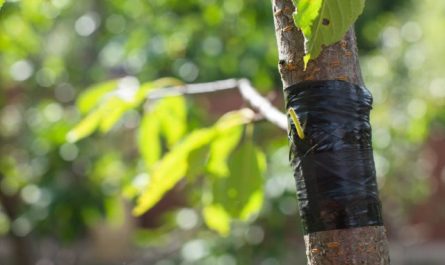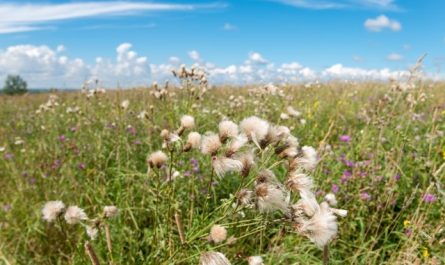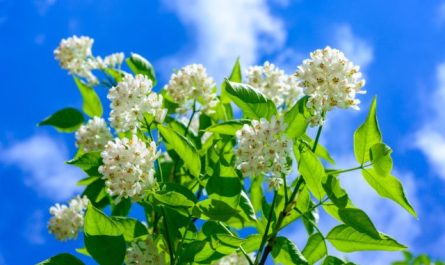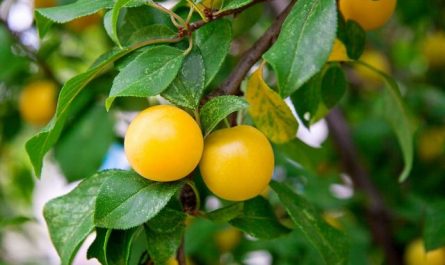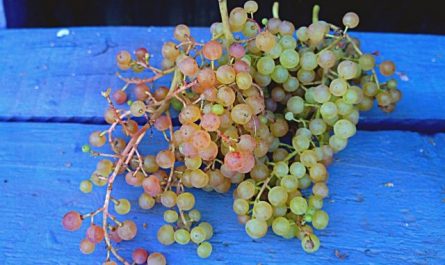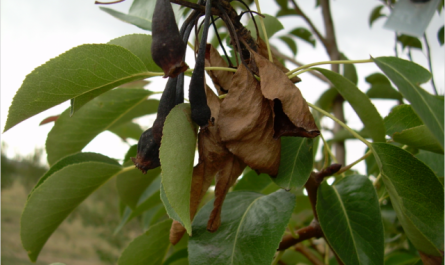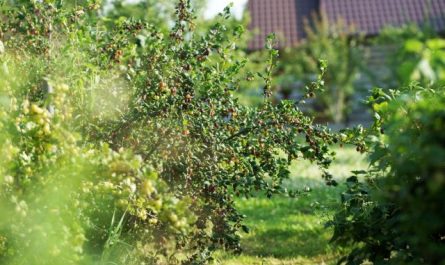Work on protecting apple trees from pests can be rationally divided into:
- autumn-winter,
- spring-summer.

Autumn-winter work to protect apple trees from pests
Many pests overwinter in the soil. Some hide in fallen leaves and weeds. Therefore, the soil under apple trees is cleared of weeds and fallen leaves, mummified fruits. Phosphorus-potassium fertilizers are applied and dug up to 10-20 cm, so as not to damage the root system of the trees.
In winter, the main active pests are mice, hares and bright sun.
- To protect the trunks from winter burns (especially young apple trees), they are whitewashed with a solution of freshly slaked lime and clay. Copper sulfate and glue are added to the mixture for better adhesion. Any insecticide and fungicide preparations against pests and diseases can also be added.
- On old trees, trapping belts are placed at a height of 30-40 cm, securing them to the trunk with a special caterpillar glue that does not dry out over time. They are smeared with 30-40 cm of the trunk and skeletal branches in March-April. The awakened pests stick to the adhesive base and die, including ants.
- In the south, young apple tree trunks are covered with roofing felt, burlap, and other materials in central and northern regions to protect them from winter-spring temperature fluctuations that cause cracking of young bark. In young seedlings, the cover covers the trunk and skeletal branches (sometimes to the top).
- In winter, mice become more active in their harmful activities. They damage the root system and gnaw at young bark. The wounds become infected, the tree becomes ill and gradually dies. In the fall, mice must be poisoned. Poison bait is prepared from a mixture of any grain and sunflower seeds. Add 50-70 g of sunflower oil (increases adhesion), 70-100 g of rat poison or another poisonous preparation to the mixture, mix thoroughly and spread it near burrows or around the area every 3-4 m. The poisoned grain must be covered with unnecessary heavy plastic, iron, wooden planks (so that it is not blown away by the wind) to protect it from birds.
- In winter, after the next snowfall, you need to trample the snow around the tree trunks. This will reduce the accessibility of mice to garden crops.
- In recent years, hares have multiplied, causing significant damage in winter, especially to young trees. They easily overcome insulating wraps and gnaw young bark. Protection from hares is a Rabitz mesh, put on a cover over the insulation at a height of about 1 m. The mesh should be dug into the ground from below.

Every garden should have bird feeders and birdhouses that attract birds. They are very helpful in destroying pests in the spring and summer.
Spring-summer work to protect apple trees from pests
In the spring there is the largest volume of work in the garden. In a short period of time it is necessary to do a huge amount of work in the garden and prepare garden crops for vegetation.
General and preventive measures
- We inspect the apple trees once again. We remove overwintered nests of pests, clean the tree trunks from peeling bark, seal the hollows and cracks in the bark, whitewash or paint over the cuts.
- With the onset of stable warm weather, we remove the insulation, treat the used materials with preparations to destroy pests and diseases and store them indoors until autumn.
- We remove the trapping belts and burn them. To protect the trunks of perennial trees, skeletal branches and trunks of young apple trees from the scorching spring sun, we repeat the whitewashing, adding to the main mixture the pungent-smelling pesticides dichlorvos, BI-58 and others that attract pests. For whitewashing young apple trees, instead of lime, it is better to use chalk, water-based paint or other materials that will not cause a burn of the young bark. Nitrofen can be added to the whitewashing mixture at the rate of 200 g per bucket of water. The preparation is effective against wintering pest eggs. The same solution can be used to treat the crown of apple trees before the buds open.
- After whitewashing, apply special anti-caterpillar glue and attach new trapping belts, treating them with pesticides. Ants and other pests will die in the trapping belts and on the adhesive path. Replace the trapping belts again in the spring after 10-12 days. Burn the used ones.
- With the onset of warm weather, having spread sheets of film under the crowns of still leafless trees, we shake the tree branches with a long pole. At a temperature of +6-+9ºС, weevils and sawflies, numb from the cold, will fall onto the litter. All that remains is to collect and destroy the pests. The work carried out will help to significantly reduce the number of pests in the garden.

Types of pests on apple trees
Pests are divided into two groups based on the way they damage plants: sucking and gnawing.
К sucking pests include those that, having settled on plants, suck out the juice through punctures, depriving the crop of normal nutrition (aphids, mites, scale insects, leafhoppers, leafhoppers, spittlebugs).
Gnawing pests feed on leaves, ovaries, buds, flowers, young shoots and roots. Eating young vegetative and generative organs, they cause irreparable harm to plants. This group includes caterpillars of various butterflies, weevils, click beetles, longhorn beetles, May beetles, etc.
Sucking pests (aphids, leafhoppers, leafhoppers), actively reproducing, form large colonies in a short time from early spring, which, during epiphytotics, cover young buds, green shoots and blossoming leaves in several layers. As a result of their vital activity, the colony of pests secretes “honeydew”. The sweet liquid is the favorite food of ants and a good nutrient medium for saprophytic fungi. Ants, feeding on honeydew, unwittingly become carriers of many fungal diseases.

Before and during flowering, aphids and flea beetles are joined by mite larvae, and after mass flowering of apple trees, spittlebug and comma scale larvae emerge from the laid eggs. They crawl along the young shoots of the crown and feed on the plant juices. As a result, young plants may die, and in adult fruit-bearing crops, individual perennial branches dry out.
Methods of Controlling Sucking Pests on Apple Trees
Methods of combating sucking pests are divided into agrotechnical (discussed in the article above), chemical and folk. It is not cost-effective and too troublesome to look for special preparations for each pest. Chemical preparations of systemic action are most suitable for them. Accumulating in the tissues of the crop, they, together with the poisoned plant juice, enter the intestines of the pests and cause their death.
System of application of chemicals against sucking pests
Chemicals require strict adherence to safety precautions. It is necessary to use chemicals for processing plants in accordance with recommendations and instructions. It is very important to adhere to the processing time, after which the fruits can be used as food. It is necessary to work in protective clothing, in calm weather, preferably in a gas mask. After finishing work, change clothes and take a shower.
- Before the buds open, spray the trunk and crown of the apple trees with nitrofen. Prepare the solution using 200 g of the preparation per bucket of water. Nitrofen destroys pest eggs laid in the fall in the vegetative organs of plants.
- Spraying with a DNOC solution at a concentration of 100 g per 10 l of water before the buds open is also effective.
- During the bud swelling phase, before and after flowering, it is advisable to spray with a tank mixture of HOM and Fufanon preparations, according to the attached recommendation.
- Of the systemic preparations that destroy the gastrointestinal tract of sucking pests, the most effective against all types of aphids, psyllids, comma-shaped scale insects, false scale insects are rovikurt, karbofos, and benzophosphate.

New preparations have been released that act both selectively and on the entire group of sucking pests:
- Sanmite is recommended for use against mites and whiteflies at all stages of apple tree development;
- Nisaran, Borneo destroy not only larvae, but also eggs of pests. When processing trees, nitrofen can be replaced;
- stirrup acts specifically against spider mites;
- Actara, Confidor effectively destroy aphids;
- Mospilan and Prestige are preparations of systemic and contact action and destroy eggs, larvae and adult pests.
Use of biological preparations against sucking pests
At home, it is better to use biological preparations (bio-insecticides) to protect apple trees from pests. They are harmless to family members, pets and beneficial insects (bees). They can be used almost until the end of the growing season, including harvesting.
The basis for bioinsecticides are live cultures of beneficial microflora, which, during their life processes, destroy pests by settling in their bodies.
Of the bioinsecticides for plant treatments, the most effective are Boverin, Fitoverm, Actofit, Bitoxybacillin, Lepidocide, Bicol. Doses and treatment times are indicated for each preparation in the accompanying recommendations and instructions. It should be noted that bioinsecticides are easily combined with other biological preparations, which allows reducing the load on the tree during treatments.
- Verticillin effectively kills aphids and whiteflies.
- Bitoxybacillin and Bicol have a rapid effect on aphids and spider mites.
Bioinsecticides have a systemic and contact effect. They cause the death of sucking pests and at the same time, having properties of a neurotoxin type, cause paralysis and death of adult forms. Bioinsecticides have a shorter period of action on pests and require more frequent use of preparations. However, health is more important!

Gnawing pests on apple tree
Unlike sucking pests, gnawing pests cause physical damage to apple trees, using vegetative and generative organs as food. This group includes bud beetles, flower beetles, leaf beetles, weevils, click beetles, and longhorn beetles. Codling moths specialize in damaging fruits, and numerous butterflies are the main producers of caterpillars that can destroy the harvest in a short time. Most pests overwinter in the waste of the crops themselves (fallen fruits, fallen leaves, parts of branches from pruning, bark, etc.) as adults or lay eggs, from which, with the onset of spring and warmth, larvae and caterpillars hatch, parasitizing on plant organs.
Methods of protection against gnawing pests
Chemicals
To protect against gnawing pests, the same chemicals are used as for sucking representatives – karbofos, benzophosphate, actara, decis, fastak.
Trichlormetaphos is recommended specifically against sawflies and leaf miners. Along with other preparations, rovikurt and zolon are effective against codling moths.
Biopreparations
Among biological preparations, the leading one is the bioinsecticide phytoverm. According to the selective action on pests, actofit, aversectin-C, avertin-N are successfully used against nematodes, caterpillars at the initial stages of development, ticks.

In conclusion, it should be noted that in the vast majority of cases, the same insecticides, both chemical and biological, are used to combat sucking and gnawing pests. It is quite rare for apple trees to be affected by only one type of pest, so by using the preparation against one individual, you are actually protecting the apple trees from the rest. The main condition for effective protection is the precise implementation of the instructions and recommendations for their use.
